Research
Aerosols (also referred to as particulate matter, PM) are tiny particles suspended in the air and they play a central role in two major environmental issues confronting the world today: climate change and air quality. Aerosols impact climate through changing the Earth’s energy balance by directly absorbing or scattering solar radiation and acting as seeds for cloud formation. The radiative effects of aerosols represent the single largest source of uncertainty in our understanding of climate change. Further, air pollution impacts both human and ecosystem health. Exposure to fine aerosols (particles with a diameter smaller than 2.5 µm, PM2.5) is associated with many adverse health effects and accounts for millions of premature deaths each year worldwide.
Our research focuses on both laboratory experiments and ambient field measurements to understand the formation mechanisms and evolution of atmospheric aerosols, as well as to link aerosol chemical composition and properties to their health effects. This research includes conducting chamber experiments in which specific compounds of interest can be isolated and studied under simple, well-controlled oxidation environments, allowing for a more detailed and direct characterization of the composition, chemical, and physical properties of aerosols. We also conduct field measurement campaigns and integrated analysis of multidimensional mass spectrometry datasets to investigate the chemistry and life cycles (sources, processes, and fates) of ambient aerosols. Additionally, we work on investigation of cellular toxicity upon aerosol exposure using a wide range of high-throughput and physiologically relevant cellular assays.
Effects of Anthropogenic Pollutants on Biogenic Organic Aerosol Formation
Biogenic volatile organic compounds (BVOC, e.g., isoprene, monoterpenes) are important contributors to secondary organic aerosol (SOA) globally. However, the extent to which human activities alter SOA formation from BVOC in the atmosphere is largely undetermined. We perform integrated laboratory chamber studies and field measurements to investigate the influences of anthropogenic emissions on biogenic SOA formation using a suite of instruments including advanced mass spectrometry techniques. A particular focus is on elucidating the effects of sulfate and NOx on isoprene and monoterpene SOA formation.
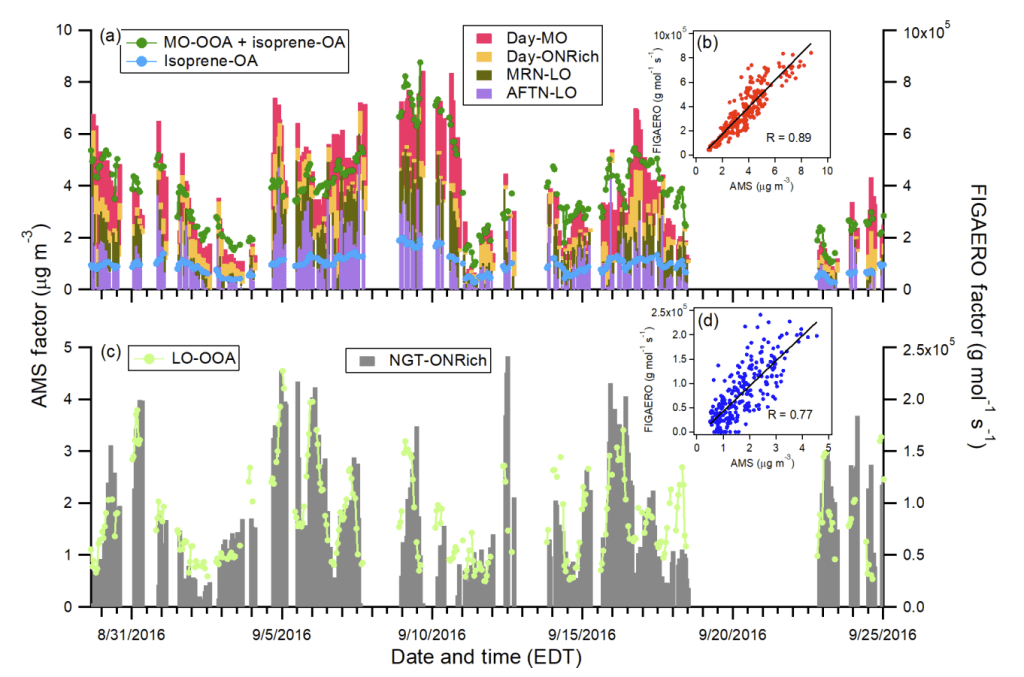
Aerosol Formation from Nitrate Radical Oxidation of Biogenic Volatile Organic Compounds
We perform laboratory chamber experiments and field studies to investigate SOA and organic nitrate formation and fates from nitrate radical (NO3) oxidation of BVOC. We aim to obtain a deep understanding of the formation mechanisms and yields of organic nitrates, their properties, and their lifetimes with respect to further gas-phase oxidations and particle-phase reactions. Results from laboratory chamber studies provide fundamental data to evaluate the contribution of BVOC+NO3 to ambient aerosols, as well as parameters that can be used in models to predict organic nitrate formation and their impacts on NOx recycling and SOA formation.
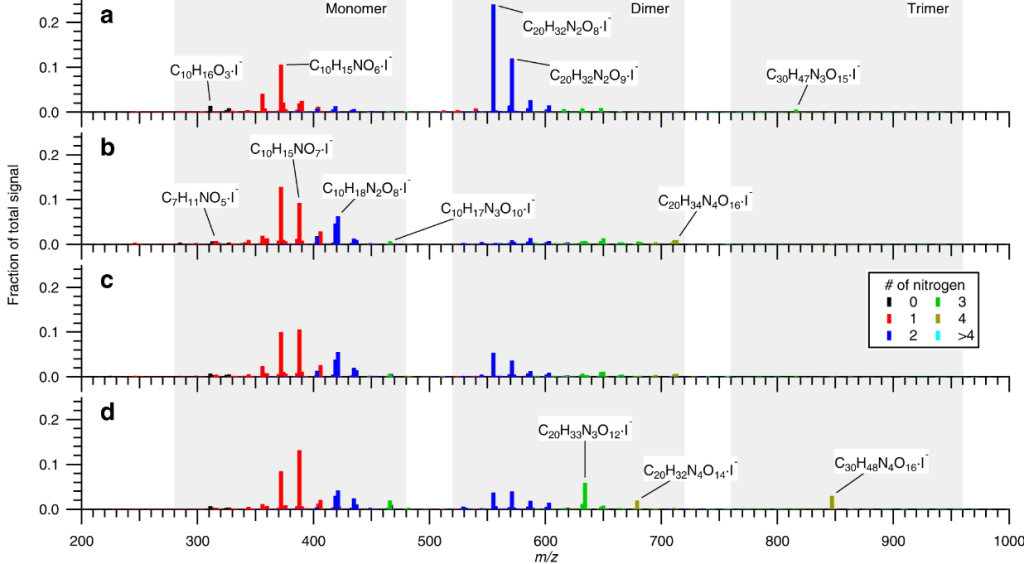
Atmospheric Oxidation of Biomass Burning Smoke
Biomass burning is a major source of trace gases and aerosols with profound impacts on air quality. It is also a major source of brown carbon which absorbs solar radiation and impacts climate. Biomass burning smoke contains large amounts of furan and phenolic compounds but their chemistry in the atmosphere is not well characterized. We conduct laboratory chamber experiments and field studies to investigate SOA formation from daytime and nighttime oxidations of furan and phenol compounds from biomass burning smoke, focusing on oxidation mechanisms, chemical composition, SOA and brown carbon formation, aqueous-phase processing, and aging.
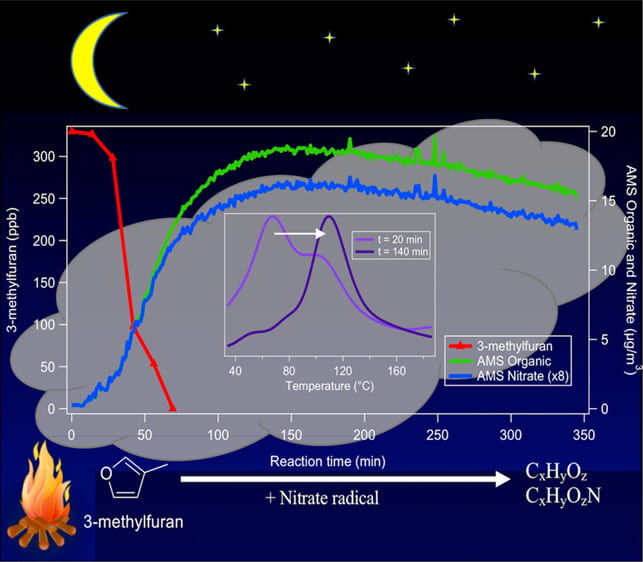
Aerosol Chemical Composition and Health Effects
Ambient PM2.5 is a complex mixture of hundreds to thousands of different chemical compounds. Despite numerous studies, it remains unclear as to what components or characteristics of PM2.5 best account for its toxicity. Utilizing high-throughput, physiologically relevant cell models (e.g., air-blood barrier lung model, miniaturized microfluidic cell array; macrophage, epithelial, endothelial cells), we measure a diverse range of cellular responses upon exposure to laboratory-generated and ambient aerosols. Combined with detailed characterization of aerosols chemical composition and properties, we aim to better understand the cellular toxicity of different types and components of aerosol mixtures.
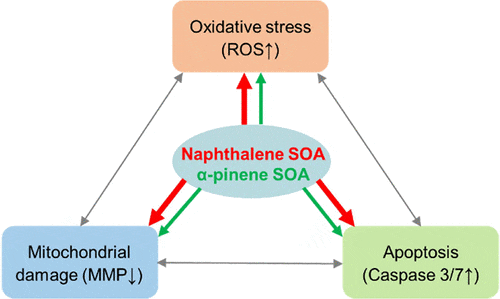
Application of Low-Cost Sensors in Indoor and Outdoor Air Quality Studies
Low (and mid)-cost air quality sensors typically cost a small fraction of research grade instrumentation and can provide high temporal and spatial resolution air quality measurements. We deploy a network low-cost sensor indoors to monitor indoor air quality, gaining insights into hourly ventilation and indoor pollutant trends across different building types and across different seasons. Low-cost sensors are also deployed at the ASCENT measurement site across the US for evaluation of sensor performance under different environments and their capability for advanced pollution source apportionment studies.
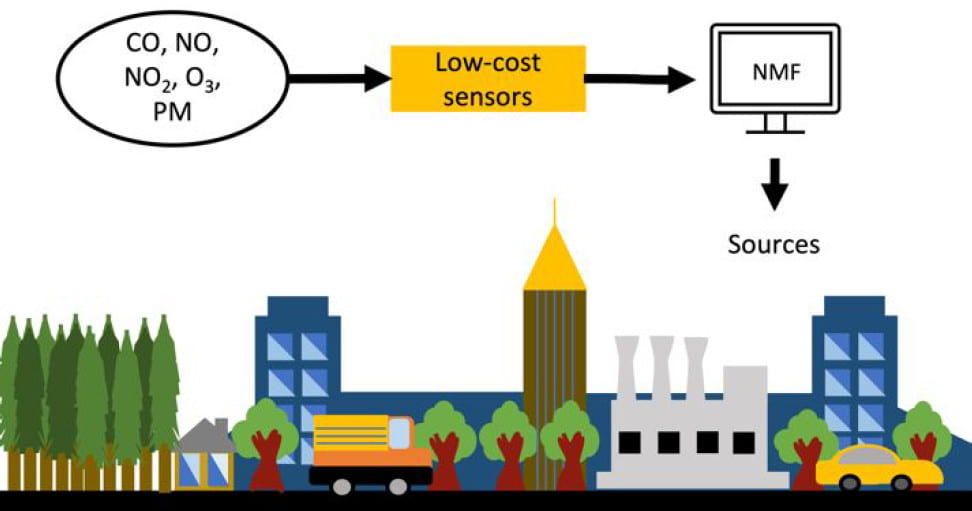
Recent Field Studies
Atmospheric Science and Chemistry mEasurement NeTwork (ASCENT)
ASCENT is a new comprehensive, high-time-resolution, long-term measurement network in the U.S. for the characterization of aerosol chemical composition and physical properties. There are 12 measurement sites across the country, each equipped with a suite of advanced aerosol instrumentation for real-time measurements of fine aerosol chemical composition and properties. Dr. Ng serves as the Principal Investigator of ASCENT. One of the sites is in Atlanta and is operated by the Ng group. More information can be found on the ASCENT website.
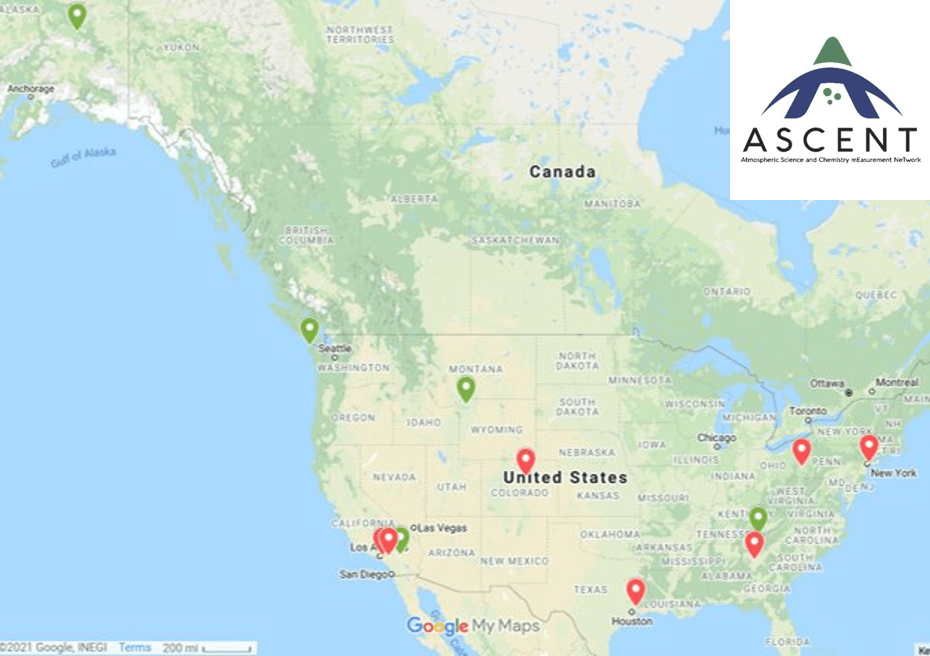
Atmospheric Emissions and Reactions Observed from Megacities to Marine Areas (AEROMMA)
The AEROMMA campaign addresses emerging research needs in urban air quality, marine emissions, climate feedbacks, and atmospheric interactions at the marine-urban interface and future satellite capabilities of monitoring atmospheric composition over North America. We deployed a suite of online gas and aerosol instruments at the CUNY ASRC site to characterize the sources and chemical processes that govern the sensitivity of organic aerosols to changing climate variables and anthropogenic emissions.
